
10 most unusual engines in history
Content
- 1 Bugatti Veyron W-16, 2005-2015
- 2 Knight valveless engine, 1903-1933
- 3 Wankel Engine (1958–2014)
- 4 Eisenhuth Compound, 1904–1907
- 5 Two-cylinder boxer Panhard, 1947-1967
- 6 Commer/Rootes TS3, 1954–1968
- 7 Lanchester Twin-Crank Twin, 1900–1904
- 8 Cizeta V16T, 1991–1995
- 9 Gobron-Brille, 1898–1922
- 10 Adams-Farvell, 1904–1913
The paradox is that the more technology develops, the more monotonous our cars become. Due to the tightening of ruthless emission standards, exotic engines such as the V12 and V10 are disappearing and soon will be followed by the V8. It is likely that in the near future the only surviving engines will be 3 or 4 cylinders.
In this review, we consider the little-known configurations that the automotive industry has offered us. The list includes only those engines that are installed on serial cars.
1 Bugatti Veyron W-16, 2005-2015
The development of the late Ferdinand Piech to create the fastest car on the planet initially involved the use of a V8, but it quickly became clear that the task was not feasible. That's why engineers created this legendary 8-liter W16 unit, arguably the most advanced ever.
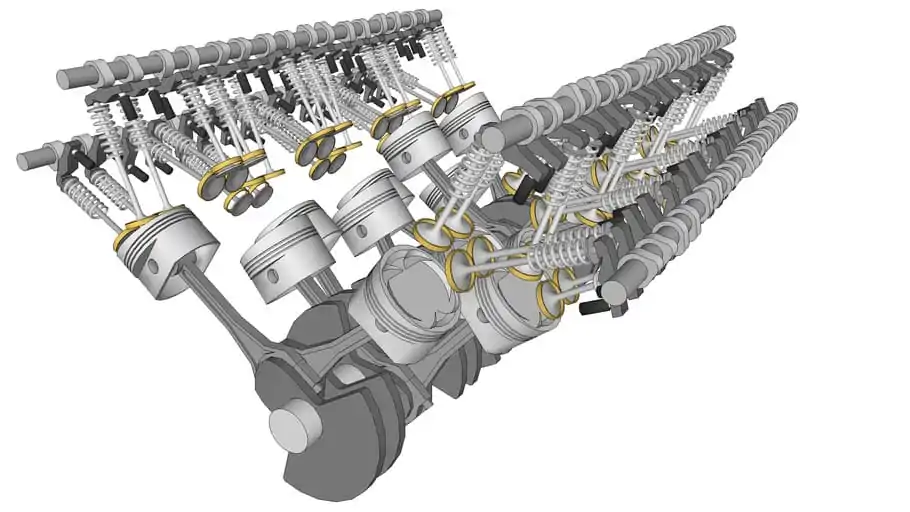
It has 64 valves, 4 turbochargers, 10 different radiators and is practically a combination of four roaring VR4s from Volkswagen. It has never been installed on a production car like this because of its incredible power - and it will probably never happen again.

2 Knight valveless engine, 1903-1933
American designer Charles Yale Knight can be safely put on a par with such great developers as Ferdinand Porsche and Ettore Bugatti. At the dawn of the last century, he decided that already installed valves in the form of plates (older mechanics call them plates) were too complex and inefficient. That is why he is developing a fundamentally new engine, which is called "valveless".

Actually, this is not a correct name, because there are actually valves in the motor. They are in the form of a sleeve sliding around the piston, which sequentially opens the inlet and outlet in the cylinder wall.
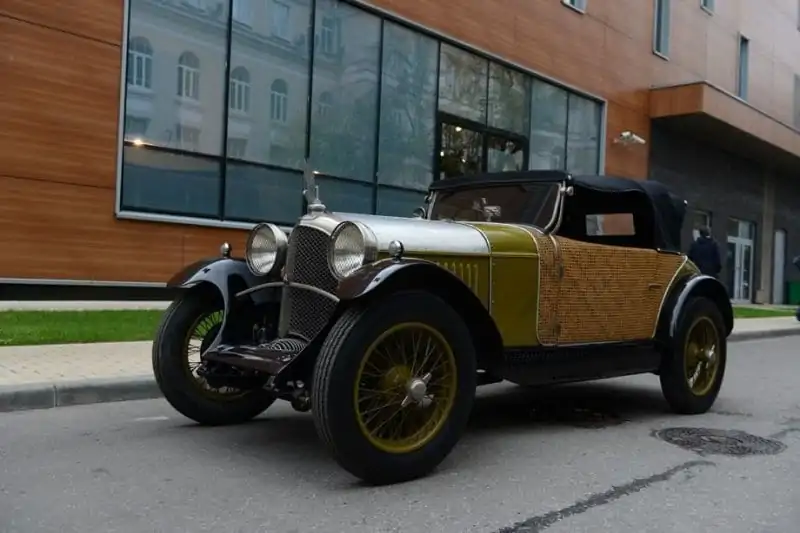
Engines of this type give quite good efficiency in terms of volume, operate quietly and are less prone to damage. There are not many drawbacks, but the most significant is the rather high oil consumption. Knight patented his idea in 1908, and later its derivatives appeared in Mercedes, Panhard, Peugeot cars. This concept was abandoned only after the perfection of poppet valves in the 1920s and 1930s.
3 Wankel Engine (1958–2014)
The idea born in the head of Felix Wankel is extremely unusual - or so it seemed at the beginning to the chapters of the German NSU, to which it was proposed. It was an engine in which the piston is a triangular rotor rotating in an oval box. When it rotates, its three angles, called vertices, create three combustion chambers that perform four phases: suction, compression, ignition and exhaust.
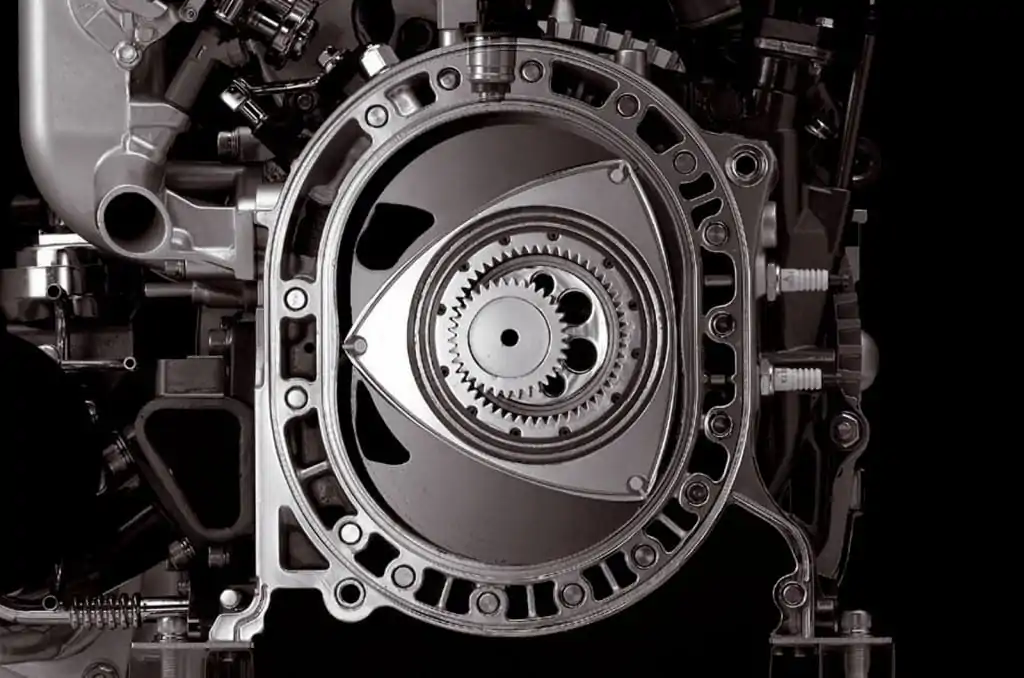
Each side of the rotor is constantly running. It sounds spectacular - and it really is. The maximum power of such engines is much higher than that of conventional analogues with the same volume. But wear is serious, and fuel consumption and emissions are even more serious. However, Mazda produced it a few years ago, and has not yet completely abandoned the idea of recreating it.
4 Eisenhuth Compound, 1904–1907
John Eisenhut, an inventor from New York, was a rather extravagant person. He insisted that he, and not Otto, was the father of an internal combustion engine. The inventor founded a company with the famous name Eisenhuth Horseless Vehicle Company, and then for many years constantly sued all business partners.
From an engineering point of view, its most interesting legacy is the three-cylinder engine for the Compound model.
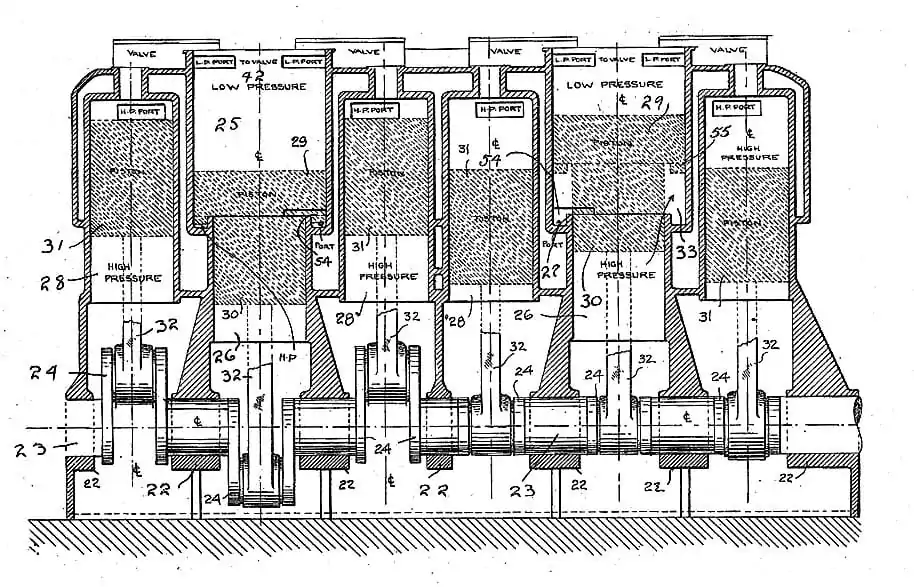
In this flow block, the two end cylinders supply the middle, "dead" cylinder with their exhaust gases, and it is the middle cylinder that drives the car. Both sides were quite large, with a diameter of 19 cm, but the middle was even larger - 30 cm. Eisenhut claimed that the savings compared to the standard engine is 47%. But in 1907 he went bankrupt and the idea died with the company.
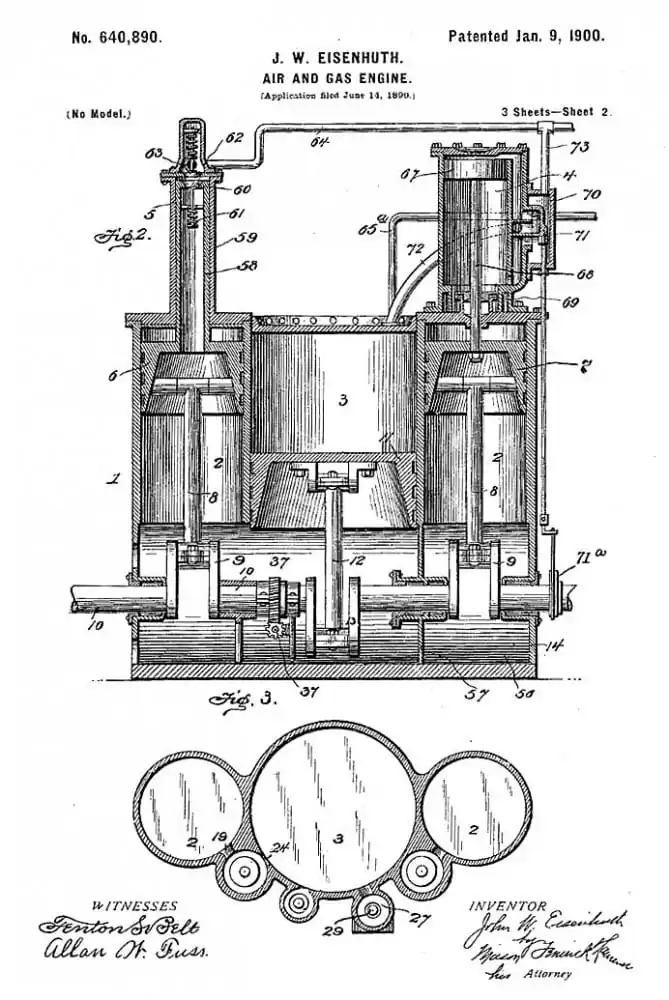
5 Two-cylinder boxer Panhard, 1947-1967
The Panhard company, founded in 1887, is one of the first car manufacturers in the world, as well as one of the most interesting. This is the company that gave us the steering wheel, then jet thrusts in the suspension, and after World War II added one of the most curious engines ever made.
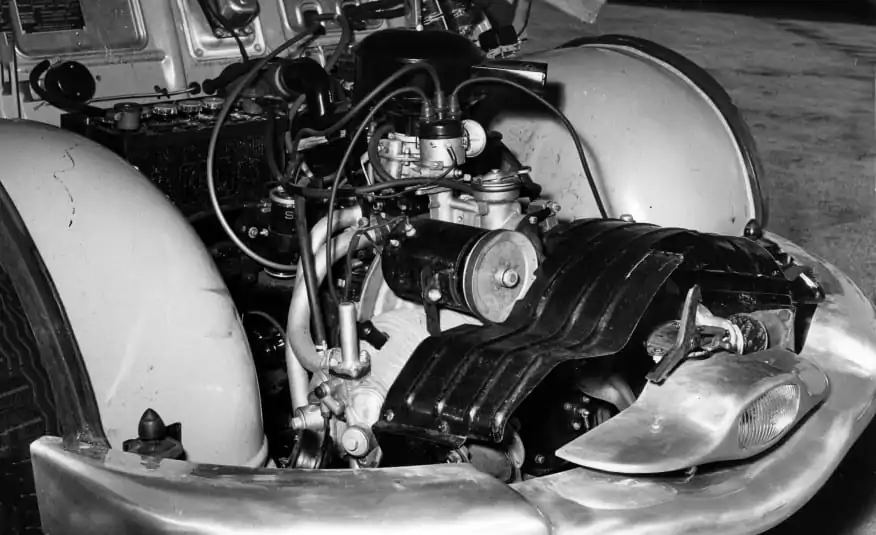
In fact, it was a two-cylinder flat engine with two horizontal cylinders located on opposite sides of the crankshaft. To date, the development is known as a boxer engine. French engineers have added very original solutions to this air-cooled unit - in some models, for example, the exhaust pipes were also fasteners.
In various models used engines with a displacement of 610 to 850 cubic meters. cm and power from 42 to 60 horsepower, which is pretty good for that time (this engine actually won its class in 24 hours of Le Mans and retained second place in the Monte Carlo rally). The owners rated them as exquisite and economical.
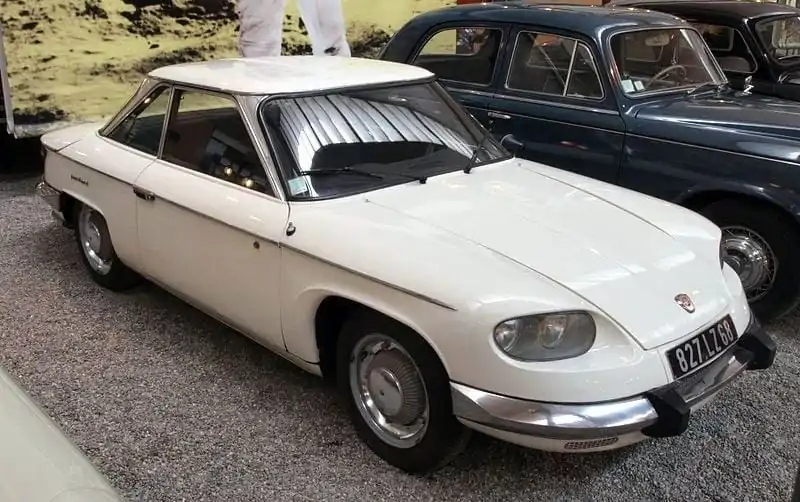
There were only two problems: firstly, these two-cylinder engines cost more than four-cylinder engines and required more complex maintenance. Secondly, Panhard designed them for lightweight aluminum coupes, and economic circumstances made aluminum too expensive. The company ended and was absorbed by Citroen. A two-cylinder boxer made history.
6 Commer/Rootes TS3, 1954–1968
This rather strange 3,3-liter three-cylinder unit went down in history under the nickname Commer Knocker (or "snitch"). His device, to put it mildly, is unusual - with opposite pistons, two in each cylinder, and no cylinder heads. History remembers other similar units, but they have two crankshafts, and here there is only one.
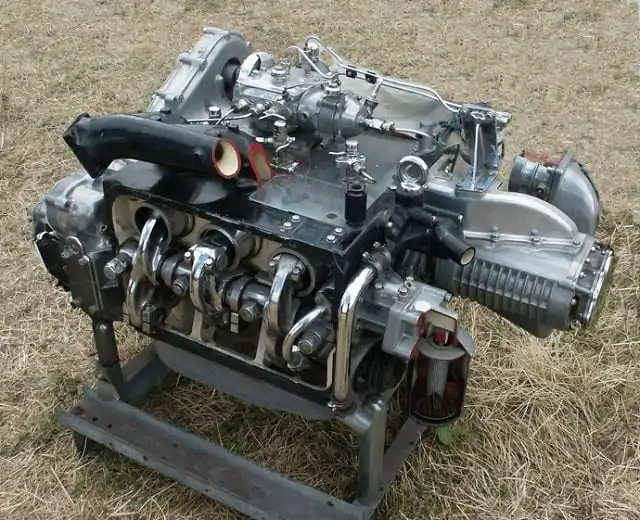
It is worth adding that it is push-pull and runs on diesel fuel.
Manufacturer Rootes Group hopes this division will provide a significant advantage in Commer's truck and bus lineup. The torque is really great - but the price and technological complexity are pushing it out of the market.
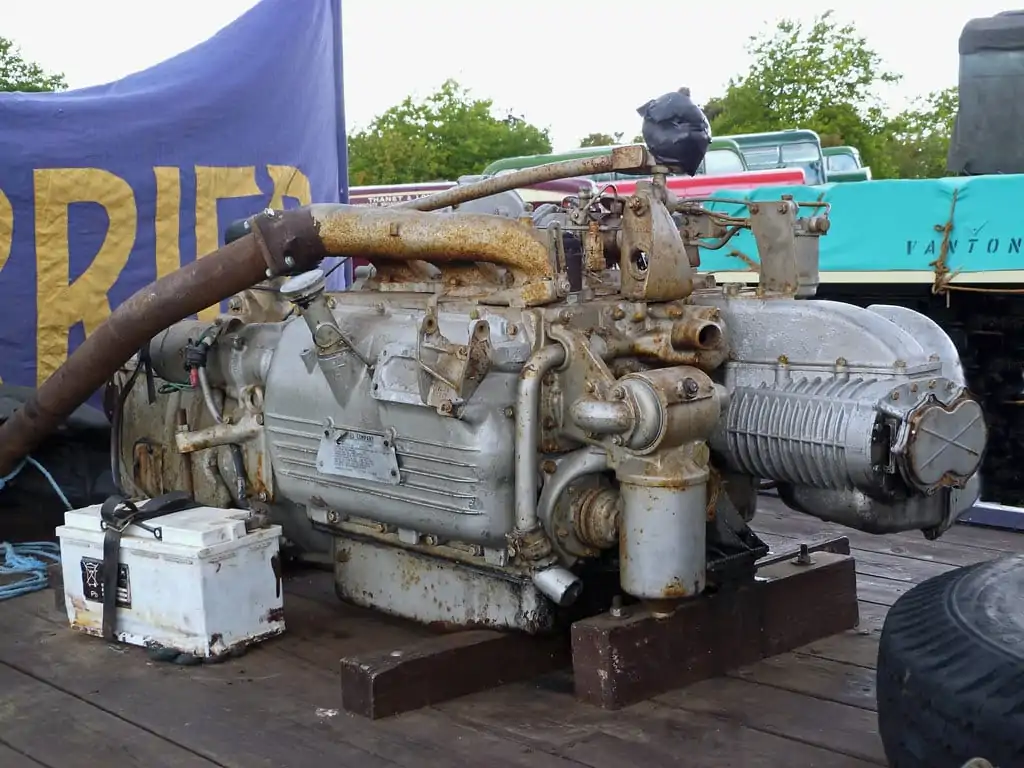
7 Lanchester Twin-Crank Twin, 1900–1904
You may recall this brand from an episode of Top Gear in which Hammond bought at a auction a car allegedly assembled by his grandfather and went with him to a retro rally.
In fact, Lanchester was one of the first manufacturers in England, founded in 1899. Its debut engine, launched at the dawn of the twentieth century, is extremely unusual: a two-cylinder boxer with a volume of 4 liters, but with two crankshafts.
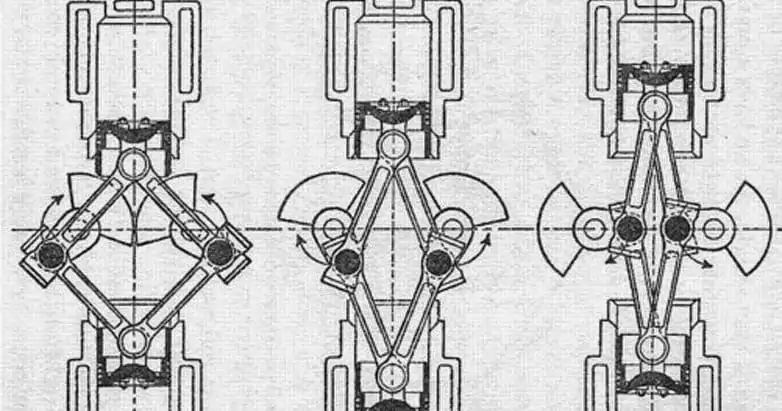
They are located one below the other, and each piston has three connecting rods - two light outer and one heavy in the center. The light ones go to one crankshaft, the heavy ones go to the other, as they rotate in opposite directions.
The result is 10,5 horsepower at 1250 rpm. and amazing lack of vibration. Despite 120 years of history, this unit is still a symbol of engineering elegance.
8 Cizeta V16T, 1991–1995
Another car that, like Veyron, is unique in its engine. The name of the model is “V16”, but this 6-liter unit with a capacity of 560 horsepower is actually not a real V16, but just two V8s connected in one unit and having a common intake manifold. But that does not make him less crazy. Since it is mounted transversely, the central shaft transmits torque to the rear transmission.
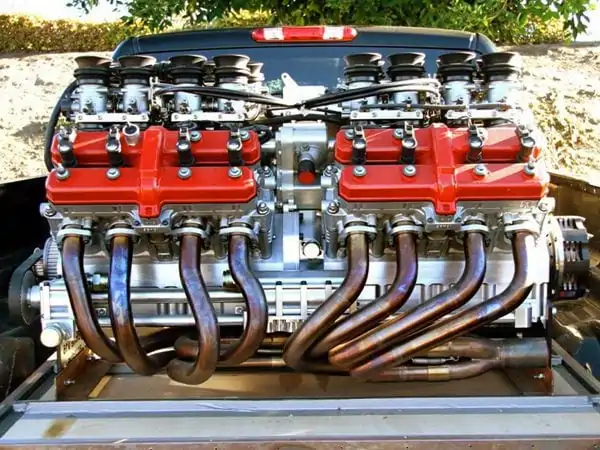
Today, these cars are extremely rare, because very few copies were produced. One of them appeared in Los Angeles. Its owner liked to make noise in the neighborhood, starting the engine, but at one point, the customs authorities confiscated the car.
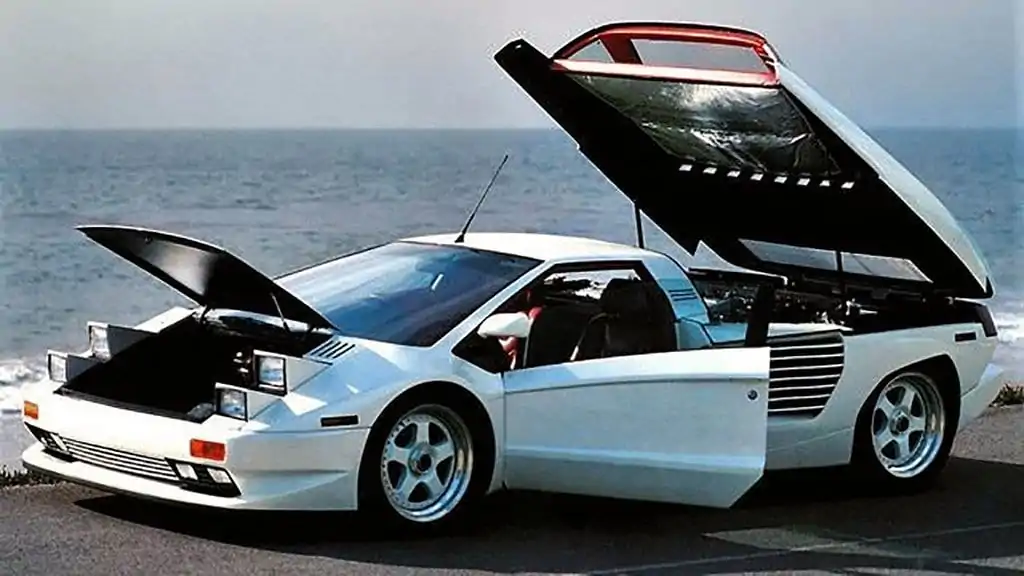
9 Gobron-Brille, 1898–1922
The “snitch” Commer, which was mentioned earlier, is actually inspired by these French engines with opposing pistons, assembled in a configuration of two, four and even six cylinders.
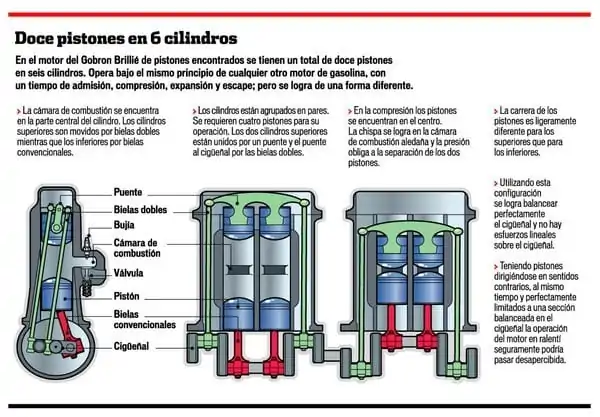
In the version with two cylinders, the block works as follows: two pistons drive the crankshaft in the traditional way. However, opposite them is another pair of pistons connected to each other, and this connection, in turn, moves two long connecting rods attached to the camshaft. Thus, the six-cylinder Gobron-Brille engine has 12 pistons and one crankshaft.
10 Adams-Farvell, 1904–1913
Even in the world of crazy engineering ideas, this engine stands out. The Adams-Farwell unit from a small agricultural town in Iowa, USA, works on the principle of a rotary motor. Cylinders and pistons in it are located around a fixed crankshaft.
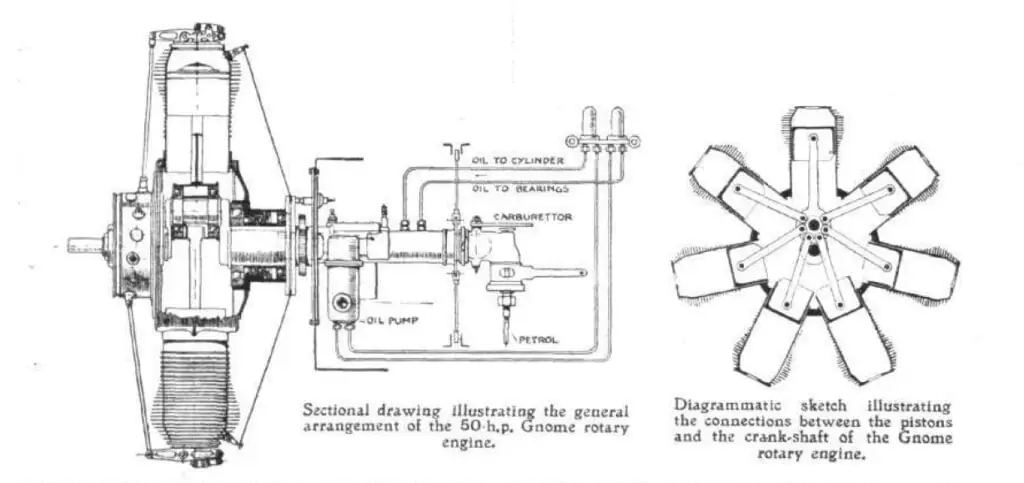
Among the advantages of this technology are smooth operation and the absence of reciprocating movements. The radially arranged cylinders are air-cooled and act like flywheels with the engine running.
Plus design - its weight. The 4,3-liter three-cylinder unit weighs less than 100 kg, which is surprisingly small for that time. Mostly these engines were used in aviation, although some motorcycles and cars were also equipped with such internal combustion engines. Among the disadvantages is the difficulty in lubrication due to the centrifugal force in the crankcase, which makes it difficult to drain oil from the motor units.